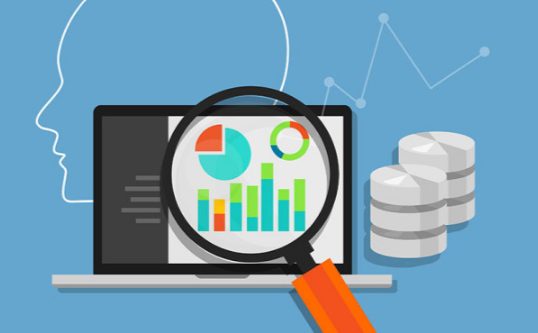As competition heats up, retailers must improve their ability to gather and analyze consumer data, then use the information to predict the shopper’s next move. And it appears the technology is catching on: the global predictive analytics market is expected to reach $10.95 billion by 2022, growing at an annual rate of 21% between 2016 and 2022.
Already, predictive analytics is delivering value by offering relevant product and content recommendations, personalizing email marketing strategies, monitoring in-store traffic and sales, and helping brands anticipate replenishment via intelligent merchandising.
This Retail TouchPoints special report highlights:
-
Real-world predictive analytics examples from brands including Fanatics, Nordstrom and The North Face;
-
How Amazon influenced predictive analytics strategies at eBay and Etsy;
-
Why predictive pricing must remain contextual;
-
The need to track specific channels in order to understand where to prioritize predictive investments; and
-
The importance of data scientists.
Predictive Analytics Personalizes Product Recommendations, Email Marketing
Predictive analytics serves as the backbone of modern personalization, whether through product and content recommendations or marketing strategies. Retailers use the tools to analyze shopper purchase/browsing history, then tailor recommendations or implement targeted strategies to individual consumers.
Online sports merchandise retailer Fanatics used predictive features from Salesforce Marketing Cloud to strengthen its email campaign capabilities, generating 27,000 personalized campaigns in a year’s span. With the platform, the retailer built a product recommendation section that accounts for between 15% and 20% of overall click-through rates, making it the brand’s second-largest contributor to customer engagement.
The Fanatics team used three specific features to gather the data necessary to predict which campaigns would work: Audience Builder, Journey Builder and Predictive Intelligence.
“Whether it’s anticipating a championship game in football, baseball or basketball, our ability to find audiences that have an affinity for those teams, and to be able to set those audiences up ahead of time before the game starts, is a great advantage of Audience Builder,” said Matt Smith, VP of CRM at Fanatics in an interview with Retail TouchPoints. “In Journey Builder, a marketer can think about an experience they want the customer to have over the next two-to-five weeks after the moment of purchase, and build out campaigns in the quiet of an afternoon rather than five minutes after the end of an intense, pressure-packed game. Predictive Intelligence lets us pick up on trends in terms of product recommendations that we wouldn’t be able to see with the naked eye.”
Amazon’s Strengths Force EBay, Etsy To Get Predictive
Given that Amazon has dominated the predictive spectrum with its attempts to be the one-stop shop for every consumer, retailers are finding that they must leverage third-party platforms to catch up with the e-Commerce giant and build campaigns based on this data.
“Predictive analytics is absolutely critical to ensuring that you still have permission to mail,” said Andrea Orvis Holden, CRM Strategy Lead at Zeta Global. “We know that consumers are considering fewer brands these days since Amazon does this so effectively. If they’re only looking at as few as four brands while they are doing their holiday shopping, that seems like a limited experience. Amazon is leveraging that data to make sure their communications are relevant, and customers keep coming back.”
With Amazon setting the bar for product recommendations and marketing strategies, it’s no wonder that pure play e-Commerce brands such as Fanatics seek to stand out with concise recommendations of their own. Even eBay has felt the pressure of Amazon, acquiring data analytics companies SalesPredict and Expertmaker in 2016 to bolster its product recommendation expertise. As eBay repositions into a more traditional e-Commerce marketplace, the company aims to rely more on structured data to sort its catalog of 900+ million product listings, and to display appropriate product comparisons and limited time deals.
In September 2016, Etsy acquired Blackbird Technologies, a startup that developed algorithms for natural language processing, image recognition and analytics. With Amazon increasing its marketplace presence and Handmade category, Etsy needed to expedite its site search and produce more relevant product recommendations for consumers.
AI, Machine Learning Power Predictive Analytics
Etsy’s acquisition indicates that Artificial Intelligence and machine learning platforms also are playing a greater role in predicting consumer preferences and behavior. Technologies such as IBM Watson are giving brands access to more consumable data across the enterprise, and enabling them to develop real-time conversations with consumers.
Nordstrom, Macy’s and The North Face all have leveraged the predictive capabilities of IBM Watson within separate third-party solutions to start these conversations. During the 2016 holiday season, Nordstrom used a chatbot shopping assistant within Facebook Messenger and Kik to offer tailored gift suggestions from Nordstrom.com, based on consumers’ responses to a series of questions.
The North Face is using AI to refine product selections based on consumer responses to a series of questions. Once a shopper enters specific details on a desired jacket or outdoor activity, the platform will ask questions about factors such as location, temperature or the customer’s gender in order to provide personalized recommendations.
Perhaps the most useful feature of machine learning platforms is that they are designed to continually adapt to consumer responses over time, theoretically providing more accurate recommendations the longer they are in operation. The more data the platforms receive, the more “comfortable” they get in building algorithms to enhance the customer experience.
“These are great tools because they answer complexities at a speedy rate,” said Mike Kim, Director at AArete, a global consultancy specializing in data-informed performance improvement. “Shoppers now can get real-time output from key business questions. As people want to start utilizing machine learning and getting those answers more rapidly, retailers must make sure they have more specific applications to answer nuanced questions that might only apply to specific products and brands.”
Pricing, Even When Predictive, Requires Context
Many predictive analytics platforms are designed for price optimization, but in today’s world of deep discounts and markdowns, brands must prevent themselves from entering a race to the bottom.
Effective pricing requires studying both pricing trends and the consumer’s potential action. With predictive analytics, brands can monitor consumer’s buying habits and offer predictions on what actions they may take at certain price points, or in response to a particular set of bundled offerings or discounts.
Lakshman Lakshmanan, a Senior Manager in the Analytics practice of A.T. Kearney, noted that contextualization drives predictive pricing. During an online shopping trip for a new mobile phone, Lakshmanan compared prices between Amazon and another retailer. He noted that the competing retailer lowered prices of the particular phone in real time, and even prompted him to purchase the phone immediately.
“For me, Amazon offered a lower price point, but they also had a lot of ads layered on top of the lowered price,” said Lakshmanan in an interview with Retail TouchPoints. “This ability to analyze consumers as they navigate the site, respond in real time and use pricing as a tool to enhance the shopping experience will be important going forward.”
Measure Channel Engagement To Prioritize Investment Strategies
Despite the clear benefits predictive analytics provide, retailers should be warned: predictive analytics platforms can be a wasted opportunity if they’re not correctly integrated with a business strategy.
Shoppers’ tastes greatly affect how retailers can build an appropriate strategy. Not every retailer is going to want to base an entire predictive campaign on prior purchases; sometimes consumers may be interested in the newest product release, or a product they searched for once four months ago.
“We would not recommend retailers to just blindly plug in a personalization algorithm to their web site, email or any aspect of their marketing, and just hope that it provides value to your customers,” said Joe Reger, Co-Founder and CTO at Springbot in an interview with Retail TouchPoints.
Reger noted that retailers should focus on one major metric when ramping up their predictive analytics strategy: “Involvement in purchase decision.” This metric refers to the specific channels consumers use throughout their shopping journeys, and how much time the shoppers spend at each touch point. For example, if merchants notice that more shoppers are browsing a social media page during the path to purchase, then they should prioritize predictive campaign investments through that channel.
Now Hiring: Data Scientists
Brands also should carefully consider the value in attaching to the latest hot trends: Customer behavior may represent a short-term fad or a long-term interest with staying power. Businesses need to have both the right technology and the right people in place to recognize a trend’s timeliness.
Data scientists are an in-demand commodity: 43% of organizations say at least 10% of their companies’ digital and analytics positions are unfilled, according to the A.T. Kearney 2015 LEAP Talent Study. With retailers expecting to need 29% more “digital” and “analytics” talent in their business by 2020, they need to prioritize the hiring of data scientists.
“The data scientist has strong business acumen and can convert those business problems into numerical problems that are credible,” King stated. “They need to be somewhat software-agnostic, because the software and the technology is changing so rapidly. Having a strong data scientist used to working with multiple systems — who can customize solutions — is valuable. It’s not enough to just be able to push a button in a program and align the code. We need to understand why specific models are churning out certain outputs.”
With that in mind, retailers must take a comprehensive, nuanced approach to data analysis if they want to measure trends effectively, and spend more time recruiting data scientists that understand how to make better decisions based on the information presented.













